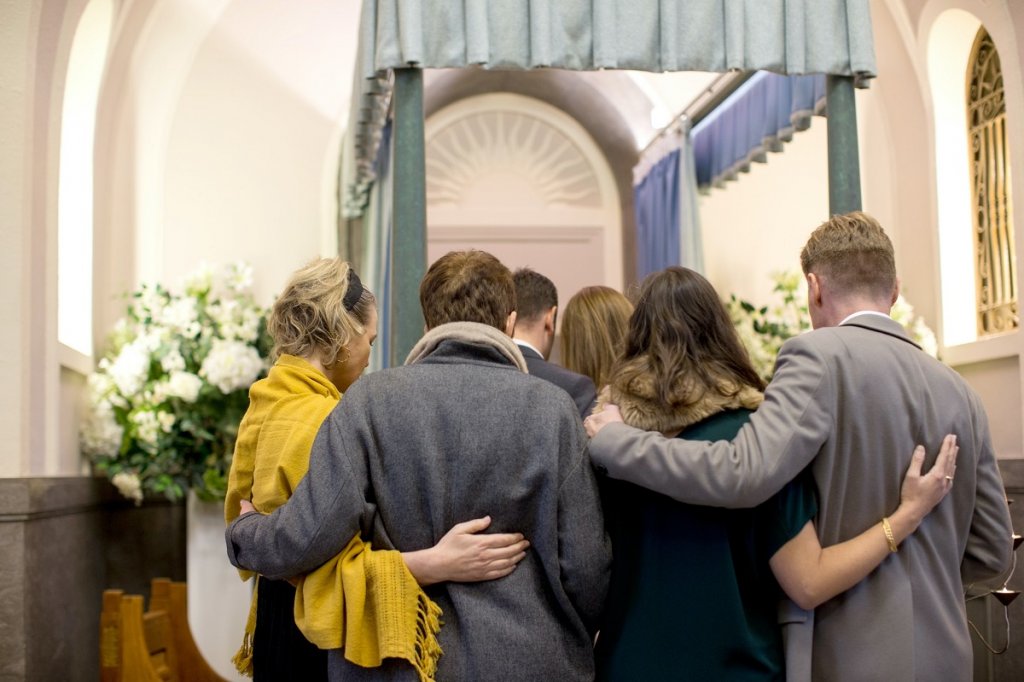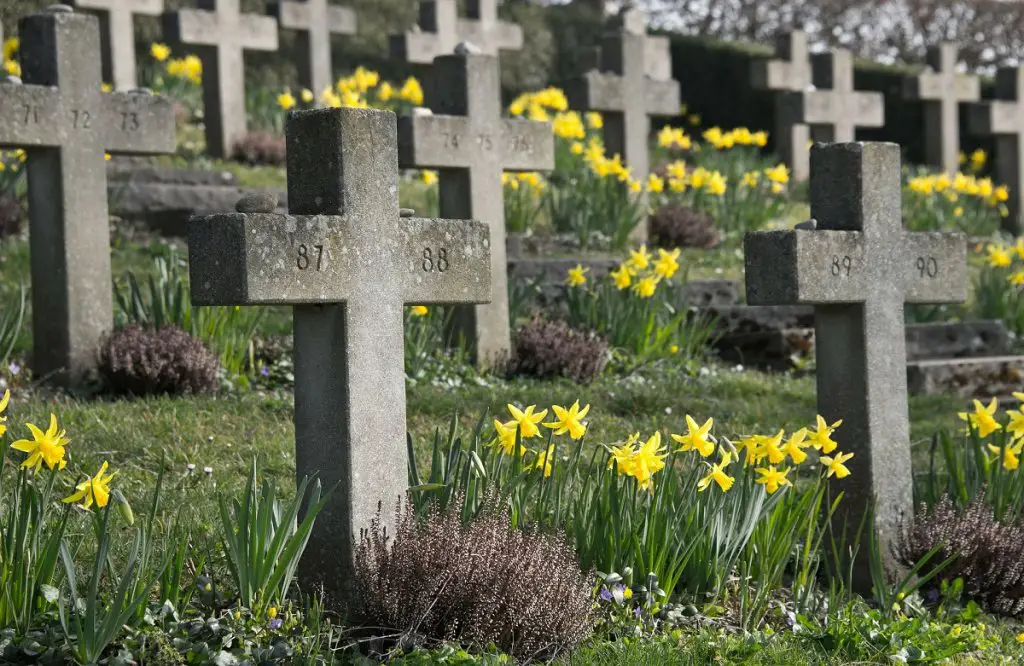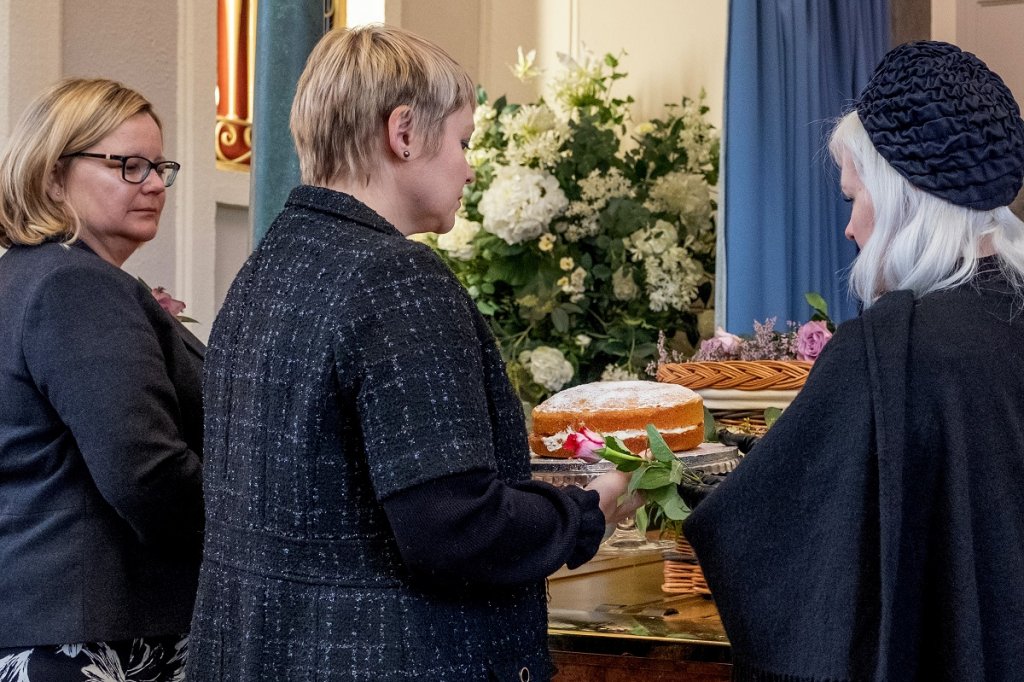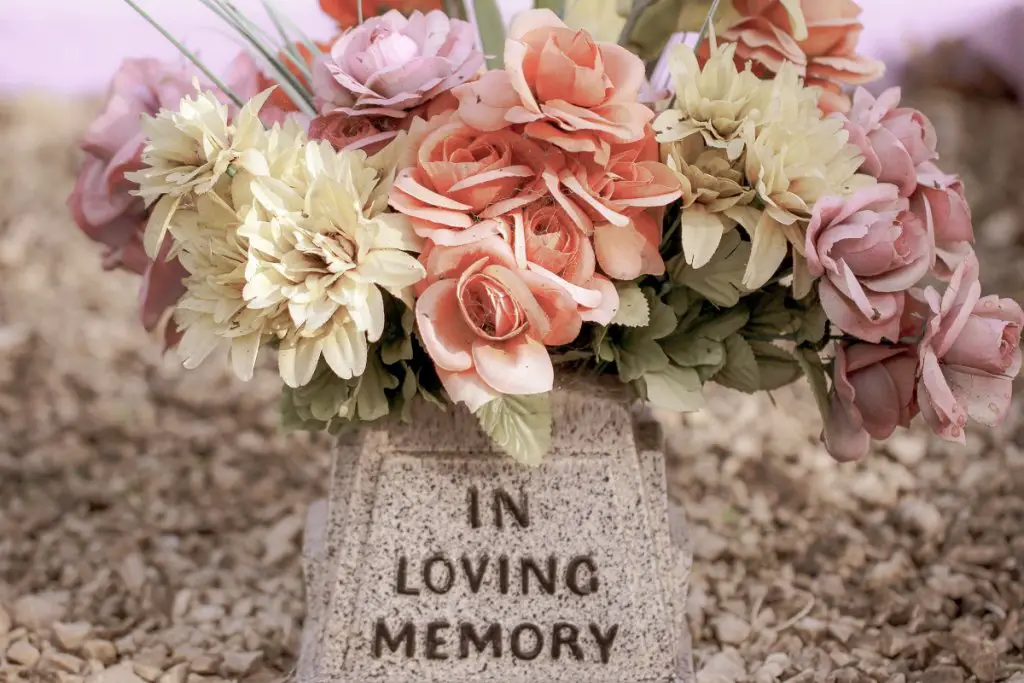After a person dies, many decisions about funeral arrangements must be made quickly. After locating any pre-arrangements the deceased made, contact the funeral home and make any necessary arrangements for the service, burial, and reception. Funerals can be costly, so keep an eye on costs.
Whether Grandma Mary dies after a lingering illness or Uncle Jack dies suddenly after a heart attack, a family member, friend, or other responsible parties must quickly make the necessary arrangements to dispose of the deceased’s remains and say a formal goodbye.
Having a step-by-step guide is helpful when those planning the itinerary may be overwhelmed by grief.
Settling the affairs of someone who has died is necessary as well. Still, that process is less time-sensitive than arranging the cremation or burial and any services accompanying these rituals.
The following funeral planning guide will take care of the immediate concerns.

Table of Contents
Locate Any Pre-Arrangements
Some people pre-plan for their death by making their preferences known for how to proceed. There are still many details to attend to, but if the deceased has conveyed their desires to a family member or legal representative, the process may be more accessible and less costly.
They may have gone beyond just making their wishes known and prepaid for their funeral or purchased a gravesite.
The family will still have to set the date and arrange other complementary services, but pre-planning and prepaying will greatly assist whoever makes the final arrangements.
Obtain a Declaration of Death
Within hours after death, planning for the funeral starts. First, a medical professional must officially declare that the person is dead.
Suppose a person dies at home or otherwise outside a healthcare facility. In that case, someone should call 911 so emergency personnel can attempt to resuscitate him (unless the person has a DNR or “Do Not Resuscitate” order) and take them to an emergency room where a doctor will declare the person dead.
A hospice nurse can also pronounce someone dead and help arrange transport to a funeral home. If the death occurs in a hospital or nursing home, personnel there will contact the funeral home the family desires.

Contact the Funeral Home
After a person has died, strict laws govern the disposition of the body, so DIY funerals are not usually an option. Funeral homes know the rules regarding embalming, cremation, and burial and have the equipment to safely and efficiently process the deceased. While only a dozen states require the use of a funeral home, doing so ensures compliance with the law and takes the burden off the grieving family to make the necessary plans.
Funeral directors assist the family in planning the event, selecting the casket, and arranging the burial, so contacting the home at once is essential. Picking the right funeral home can be challenging, given the urgency of having the body attended to.
If they have no prior experience with a particular home, a grieving family might turn to friends for recommendations for places that offer caring services at a reasonable price. After calling the funeral home, family representatives schedule an appointment to discuss the arrangements and pricing.
What a Funeral Home Provides
The funeral home receives the body, prepares the remains of the deceased for burial or cremation, and performs many services before and after the burial. These may include:
- Embalming the body and making it presentable for open viewing, if desired.
- Providing restorative and cosmetic services to make the body presentable for viewing – is especially important if the deceased suffered from a debilitating illness before death.
- Offering a casket or urn for the remains.
- Applying for death certificates and submitting paperwork and legal documents for insurance and benefits.
- Hosting a viewing and providing a place for family and friends to gather and reminisce.
- Ordering flower arrangements from the family and receiving incoming ones from other family and friends.
- Providing a site for the service.
- Transporting the body in a hearse and part of the family in limousines and to the burial site.
- Cremating the body or delivering it to a third-party vendor.
- Communicating with the cemetery.
- Arranging for the publication of death notices in newspapers and online.
- Hosting a luncheon or reception after the service.
During the initial meeting with the family or other person making the arrangements, the funeral director will present an estimated total cost of the services desired. Typically, they will offer packages that include the benefits most people need and a la carte services the family may want.
By law, funeral homes are required to be upfront about costs. Every component of after-death care has a price tag that the funeral home must convey to the family. The family can accept the estimate from one funeral home and allow them to proceed or go elsewhere.
Choosing the right funeral home can reduce the stress on the family at a difficult time.
Determine The Type Of Funeral
After death, the body is buried or cremated, depending on the deceased’s preferences.
While burial has been the traditional approach to disposing of a dead body in the US, cremation rates nationwide have soared from 33.% in 2006 to 57.5% in 2021. Most funeral homes offer cremation and burial services to accommodate this growing preference. Cremation is a cheaper option than traditional burial. According to the National Funeral Directors Association (NFDA), a funeral with cremation and viewing costs $6,515 in 2021 vs. the median cost of a funeral with burial and viewing exceeds $7,848 or over $9,100 with a burial vault required in some states.
The family often arranges a funeral service at a place of worship, the funeral home, or even the gravesite. The funeral or later memorial service usually reflects the deceased’s religious affiliations, culture, military service, or fraternal affiliation.

Select the Casket Or Cremation Vessel
While laws differ from state to state, most localities require that the dead be enclosed in a casket before burial. Funeral homes offer a line of caskets for purchase, although many prefer one brought in from elsewhere. Amazon, Costco, Walmart, and other online vendors will ship one right to the funeral home.
For direct cremations, where there will be no viewing, neither embalming nor a casket is necessary. If there is to be a viewing, embalming is required to preserve the body, which must be in a coffin, which can be rented.
The ashes for cremation are often placed in an urn, but no regulations define this vessel. The cremated remains are placed in a temporary container until the family buys a more permanent urn from the funeral home or other vendor, makes one, or repurposes a vessel they have on hand. The funeral home even offers urn rental for the service if the family plans to release the ashes or is undecided about what they want.
But there are many alternatives people can consider when choosing an urn or final resting place for the ashes. Click here to review 18 things to do with cremated remains.
Prepare The Obituary
The family usually chooses to remember their loved one in an obituary that recounts the deceased’s life. They may publish an abbreviated form online or in a newspaper as a death notice publicly announcing the death to friends and acquaintances. They may share a link to the obituary on their social media. At the funeral service, they may hand out copies of the obituary to the mourners as part of a program showing the service order.
While someone who knows the deceased must provide the information and a photograph, the funeral home can assist the family in writing and formatting the obituary. If they perform this task, they accumulate any bills for these services and pass them along to the family as part of the final accounting of funeral expenses.
However, it’s likely more meaningful for a family member to write the obituary, so peruse our obituary templates and examples here if you need any help. Or, for more specific obituary help, here are some recommendations on how to approach an obituary for a mother and an obituary for a father.
If the obituary is to be distributed as part of the funeral program, the funeral home may provide copies or ask the family to bring them. Some details about the deceased may be used on the funeral home’s prayer or memorial cards.

Decide Where The Interment Will Take Place
A deceased who is to be buried rather than cremated will need a cemetery plot. The family must produce proof of ownership if they have already purchased one.
If not, the family or the funeral home must acquire one. Buying a plot in advance guarantees the location in a particular cemetery, while buying one on the spot is more costly and in a location dictated by availability, not preference.
Once the burial site is determined, the funeral home will make arrangements for the opening and closing of the grave.
The family will receive the ashes for cremation if they are buried or stored in a mausoleum and columbarium.
Plan The Services
Before the burial or cremation, the deceased’s body may be displayed for a few hours or days so that friends, acquaintances, and colleagues can pay their respects. A service usually commemorates their life and consoles and offers closure to those left behind.
The family must decide:
- Will there be a wake? Will it be an open or closed casket?
- Will a photo display, slideshow, or video run at the wake or funeral?
- Will there be services at a religious institution? At the gravesite? Or will there be no services?
- Who will actively participate in the service? Who will do readings, give the eulogy, or perform other roles at the funeral? Who will be the pallbearers?
- What music will play or performed at the wake or funeral?
The family usually decides on the type of funeral service and what it will include. The funeral home coordinates the wake and has personnel throughout the service.
If the family contacts the church or other location where the services will be held, the funeral home will coordinate the dates and times of the viewing, service, and burial.
In light of the ongoing Covid pandemic, visitations at funeral homes and services may be limited to close family members, while memorial services are planned for a future date. Some funeral homes offer streaming services to allow those who cannot safely attend to participate, while others may work with third-party vendors who can record the event for live streaming or later viewing.

Plan A Reception
After the services, the funeral home can be a convenient place to hold a luncheon or reception. While they seldom have catering staff, they can arrange the details for a repast that might be a light snack or a full meal. Some families hold the reception at a restaurant, hall, or private residence.
Whether the repast is open to anyone or just close family, the announcer at the service will extend the invitation at the service. After a public repast, many families continue the celebration of life by gathering at home.
Budget Funeral Costs When Considering Funeral Arrangements
The average cost of a funeral in the United States in 2022 is over $8,100.
Prices can soar to over $10,000 in Hawaii, California, New York, Alaska, and Massachusetts and average under $7,000 in many Southern states.
Extra services increase the bottom line, so the cost of a funeral can be much higher. Loved ones should not overspend out of grief and remorse.
A competent funeral director will not try to upsell the bereaved family to raise the costs. He should engage in a frank discussion regarding the budget. The funeral consultant will make suggestions for keeping costs low and offer payment options so that they can make an informed decision.
Paying for the funeral is an important issue for the family and the funeral home. The deceased may have prepaid some of the costs or purchased life insurance to cover them; they are always services that cannot be determined until after death. These include:
- Ambulance transport of the body to the funeral home
- Application fees for death certificates
- Application fees for a burial permit
- Costs for the reception or luncheon
- Flowers
- Prayer or memorial cards
- Advertising fees for death notices and obituaries
- Cemetery charges
- Clergy / Church Offering
- Organist fees
- Headstones, gravemarkers, or Inscriptions

To cover all or some of the costs, a family member may take out a bereavement loan or put the balance on a credit card. Those without funds might turn to crowdsourcing through GoFundMe or other sites.
No matter how caring and compassionate the funeral director is, he needs at least a deposit for the services and a plan for the balance. The funeral home has many immediate expenses, plus additional outlays for flowers, advertising, death certificates, and more that were billed to them rather than to the family.
A funeral should celebrate the deceased’s life, giving comfort and peace of mind to the living. Thoughtful funeral planning can keep funeral costs within budget while ensuring a tasteful sendoff for the deceased.

